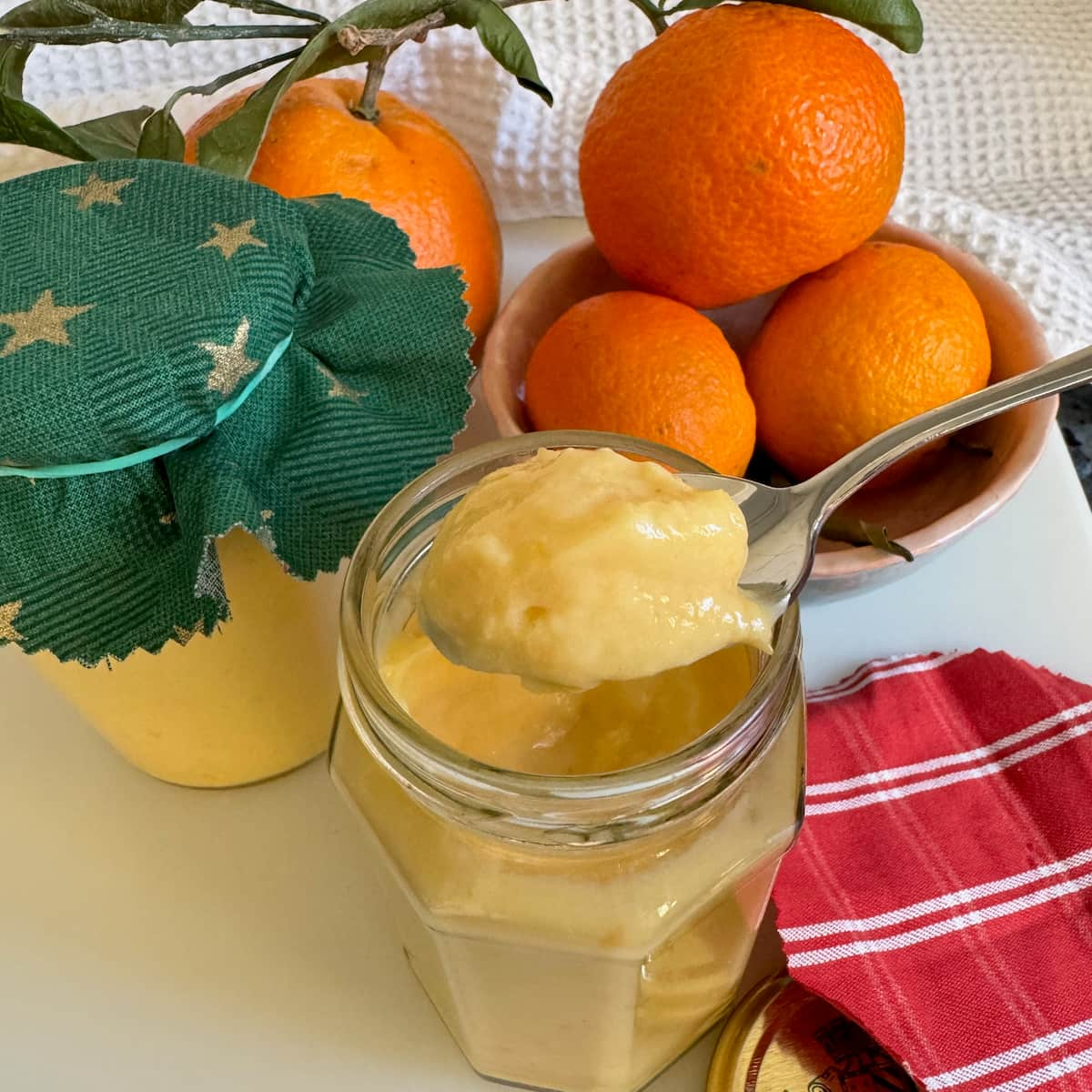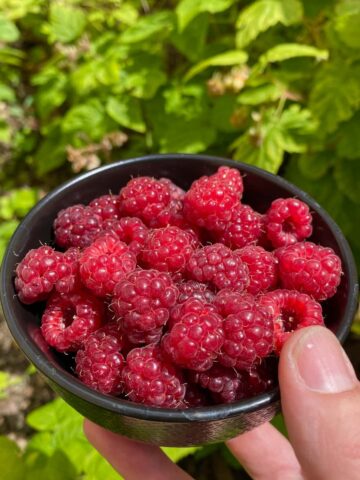Guide to French clementine oranges, mainly from Corsica, when in season, and how these citrus fruits are compared to mandarins and cuties.

Clementine Orange Season
In France, clementines are in full season in both Autumn & Winter: from end October to February. As a result, they have been traditionally used during the festive season and popularly known as Christmas oranges.
What is a Clementine Orange?
In French, it's the same word but pronounced 'Clémentine': clay-mon-teen. Those most famous in France are les Clémentines de Corse (Citrus reticulata corsica).
Clementines are smaller than oranges and mandarins, are sweet, slightly acidic (Corsican ones are more acid), easy to peel and don't have pips. Not all are seedless, however, as there are two exceptional varieties that contain seeds like Monréal, which has the most with more than 10 seeds.
Clementines are most famous from the French island of Corsica in the Mediterranean and, although growing there since 1925, only began producing as of the 1970s.
As of 2007, they have been IGP (Protected Geographical Indication) protected on the island and renowned for their quality thanks to no treatments used after being harvested by hand. According to the French Ministry of Agriculture, 30,000 tons of Clementines Corse IGP are harvested each year.
Why are They Called Clementines?
The Clementine was born in 1902 in Oran, Algeria. Monk, Father Clément Rodier and botanist, Louis Trabut, discovered a new smaller type of orange in an orphanage garden. It was the natural hybrid between a mandarin and a bitter orange (bigaradier)
Trabut later named the little clémentines after Father Clément in his honour.
Are Cuties, Clementines and Mandarins the Same?
So a clementine is a natural cross between a mandarin and an orange without pips. However, there's still some confusion over different names in Britain and in North America when it comes to these little oranges.
For example, Cuties® (and Sweeties) were the generic name given to clementines in 2001 in a marketing campaign to encourage Americans to eat more citrus fruit. It worked, the name now stays but they are sold as both clementines and mandarins. Mandarins are not the same as they are bigger, less sweet and always contain pips.

What's the Difference Between a Clementine and a Pixie Tangerine?
Likewise, in the USA, the Pixie tangerine was developed by Howard B. Frost at the University of California Citrus Research Center at Riverside in 1927 and been around since the 1960s. A result of open pollination of Kincy mandarins, there's not much difference after tasting them recently in California. They're so similar to clementines, as small, seedless, juicy and easy to peel.
Ojai pixies are a late-season variety, ripening in March and April whereas early-season tangerines such as Satsumas ripen in November and December.
What are the Best Varieties?
Look out for Clémentines de Corse and you know you're getting the best in France. For varieties, look out for Fina and Hernandina (slightly green to the skin but great inside).

They are also candied in France, particularly in the town of Apt in the Lubéron and used in cakes, pastries and in the traditional Brioche des Rois at Epiphany.
What are the Benefits of Eating Clementines?
According to Clementine de Corse, clementine oranges are rich in vitamin C, vitamin B9, potassium, Betacarotine and Provitamine A. They're also a great source of fibre and have no fat - much like navel oranges which have a little more vitamin content.
Their health benefits range from being antioxidant, antiviral, anti-allergenic to anti-cancerous so a daily dose of 3-4 day is a good, sunny way to start the day!

How to Choose the Best Quality
How to choose the freshest oranges: brightest orange in colour is a sure indication but doesn't always mean they're the best. If slightly green (Hernadinas), they're still excellent inside. Even better if they still have their leaves. Corsican clementines are easy to spot with their long, tapered leaves.
What matters is a firm, tight skin and heavy to the touch. Any loose looking skins mean the fruit is drying inside and losing its water content.
To keep them at their best, keep either in a cool, dark place or in the fridge for up to 10 days. Store them in paper bags - they hate being sweaty in sealed plastic bags! They last up to 3 days left at room temperature but away from direct sunlight.
Do Oranges Contain Pectin?
Did you know that all oranges have the highest amount of natural fruit pectin? Use organic (labelled 'bio' in France) and unwaxed only when using the skin. This helps thicken reduced sugar jam, like in this fig jam recipe.
Savoury Recipe Ideas for Clementine Oranges
Clementines add a slightly acidic tangy sweet to savoury recipes. Try squeezing some into the following dishes and add a touch of vitamin C to boot!

Add segments in this Roast Beetroot Salad with smoked mackerel and apple. With added orange zest and a wee spice kick, this winter salad is made in just 30 minutes.
Alternatively, squeeze some of the juice and serve with duck filets (magrets de canard), or serve with this spicy chicken tagine.
Squeeze clementine juice as an alternative to lemon on pan-fried fish such as John Dory, fresh roasted sardines and mackerel.
Clementines with Dessert
Food combinations: clementine oranges are mostly eaten on their own at the table. During holiday season in France, oranges are dipped in melted dark chocolate (bittersweet) and often paired with sweet chestnut.
For the simplest treat, spread on chestnut & vanilla purée on French pancakes or crêpes and finish with a squeeze of clementine or orange juice.

For dessert, replace apples to make an even quicker clementine, gingerbread & caramel trifle.
Clementines are delicious served with French gingerbread, pain d'épices for breakfast or teatime.

Traditionally made with lemon, the citrus Fiadone Corsican cheesecake is delicious made with clementine.

Creamy orange curd - this recipe produces a thick, tangy curd that's great for topping on crêpes, brioche, in meringues - and on cakes - spoon on these carrot cakes instead of the frosting.
Not particularly French, but delicious served with carrot cake muffins and topped with some zest.
Love caramel? Then enjoy this sticky orange cake with chestnut.

Grate the zest of an orange and add to this creamy baked orange cheesecake with cinnamon.

Add clementine juice to these breakfast oat and cranberry cookies.

Add the zest of a clementine and the candied fruit to a festive French ice cream yule log. It zings with the chestnut, a match in a Christmas stocking!












